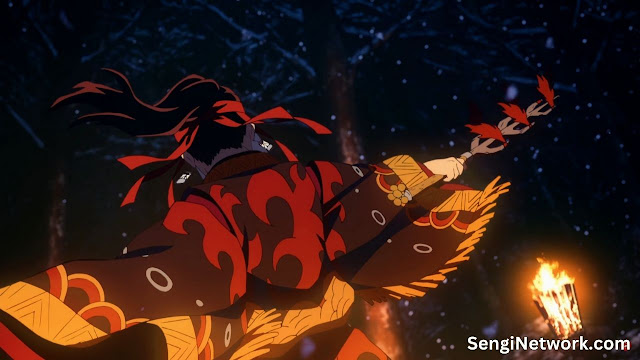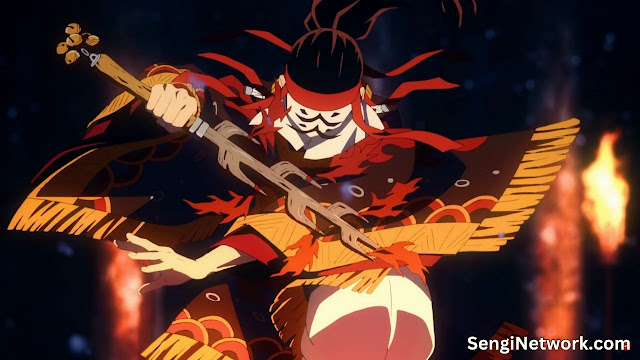The universe of "Demon Slayer" is a place teeming with sinister secrets, valiant soldiers, and powerful monsters. Tanjiro Kamado, the teenage main character who sets out on a risky trip to exact revenge on his family, is one of the fascinating characters that win our hearts. Although Tanjiro's voyage takes front stage, the mystery surrounding his father, Kamado Tanjuro, provides a fascinating dimension to the narrative. This article explores the identity, import, and effect of Tanjuro in the "Demon Slayer" anime as we dive into Tanjiro's paternal heritage.
Who is Tanjiro's Father?:
- In the "Demon Slayer" series, Kamado Tanjuro, also referred to as Tanjiro's father, is a key character.
- Tanjuro was crucial in forming Tanjiro's personality, abilities, and resolve as a Demon Slayer.
- Despite having passed away before the series began, his memory continues to influence Tanjiro's decisions.
The Legacy of Kamado Tanjuro:
- Tanjuro was a master swordsman who had served in the Demon Slayer Corps and was well known for his power and fighting abilities.
- He was endowed with a compassionate heart and an unshakeable drive, which Tanjiro inherits and carries on.
- Tanjiro's unshakable commitment to defending humanity was made possible by Tanjuro's teachings and the tremendous effect he had on his son.
Exploring the Name:
- Kamado Tanjuro is the name of Tanjiro's father, with "Kamado" standing for their family name and "Tanjuro" for his given name.
- The name "Tanjuro" has historical significance and serves as an example of the rich cultural fabric that permeates the "Demon Slayer" story.
Is Tanjiro's Dad a Demon?:
- Contrary to speculation and various fan theories, Kamado Tanjuro is not portrayed as a demon within the series.
- His character embodies the essence of a valiant and noble human warrior, exemplifying the spirit of the Demon Slayer Corps.
Facts about "Demon Slayer":
1. Koyoharu Gotouge is the author of the manga series "Demon Slayer," which was once known as "Kimetsu no Yaiba" in Japanese. It became extremely popular and was then turned into an anime television series.
2. The 26-episode "Demon Slayer" anime adaptation debuted in April 2019 and ran until September 2019.
3. Tanjiro Kamado, a young kid, and his family are ruthlessly slain by demons, with just his sister Nezuko remaining as a survivor.
4. Tanjiro sets out on a mission to find Nezuko's cure, who has been changed into a demon, and to exact revenge on his family
5. As he travels, Tanjiro meets a number of allies, like Zenitsu Agatsuma and Inosuke Hashibira. Together, they fight formidable demons and learn the mysteries of their world.
6. "Demon Slayer" has received praise for its beautiful animation, fascinating plot, and well-rounded characters, making it a worldwide success.
7. The show was critically acclaimed and commercially successful, shattering records and taking home multiple honours.
Conclusion:
The presence of Tanjiro's father, Kamado Tanjuro, reverberates strongly within the compelling universe of "Demon Slayer." Even though his persona may have passed away before the show even started, Tanjiro is still guided by his legacy, lessons, and unwavering energy.
There is a compelling scene in the "Demon Slayer" series where Tanjiro's father, Kamado Tanjuro, is shown performing a distinctive and engaging dance. This dance, known as the Hinokami Kagura, is extremely important and has a significant role in the story.
The Purpose of the Dance:
1. The Hinokami Kagura dance, practised by the Kamado family and handed down through generations, is a ritualistic style of dance.
2. Tanjuro performs this dance to call upon the Sun God, Hinokami, for blessings and protection.
3. The dance's goal is to provide the dancers enhanced physical prowess, spiritual fortitude, and a closeness to God.
4. Tanjuro strengthens his fighting prowess and instills a sense of bravery and resolve within himself by engaging in the dance, which allows him to channel the power of the Sun God.
Symbolism and Significance:
1. The dance symbolises the Kamado family's strong spiritual ties to nature and the paranormal aspects of their world.
2. It stands for the Kamado lineage's uncompromising spirit and unwavering resolve in their battle with demons.
3. The dance's exquisite motions and exact steps exemplify grace, order, and harmony and are a reflection of the Kamado family's morals and their quest of justice.
Tanjuro's Mastery of the Dance:
1. Tanjuro is shown as a master of the Hinokami Kagura, demonstrating his talent, commitment, and in-depth knowledge of the dance's nuances.
2. His ability to dance well not only improves his physical capabilities but also is a sign of his unwavering commitment to defending mankind and the people he cares about.
3. Tanjuro's proficiency with the dance reveals his extraordinary fighting skills and his capacity to harness the might of the Sun God, making him a formidable foe to demons.
The Dance's Influence on Tanjiro:
1. Tanjuro's early exposure to the Hinokami Kagura dance has a profound effect on him and helps to shape his character and resolve.
2. Tanjiro draws inspiration from the dance as he strives to imitate his father's fortitude, fortitude, and steadfast attitude.
3. Tanjiro employs the dance's tenets in his conflicts with demons throughout the series since he keeps its lessons and soul within him.
In conclusion, the Hinokami Kagura dance, performed in the "Demon Slayer" series by Tanjiro's father Kamado Tanjuro, has profound symbolic and spiritual meaning. The dance acts as a channel for the Sun God's power, increasing the dancers' skills and representing the Kamado family's unwavering will in their battle against demons. Tradition, resiliency, and the quest of justice are crucial in their path as Demon Slayers, and Tanjuro's mastery of the dance and its impact on Tanjiro only serve to emphasise this.












